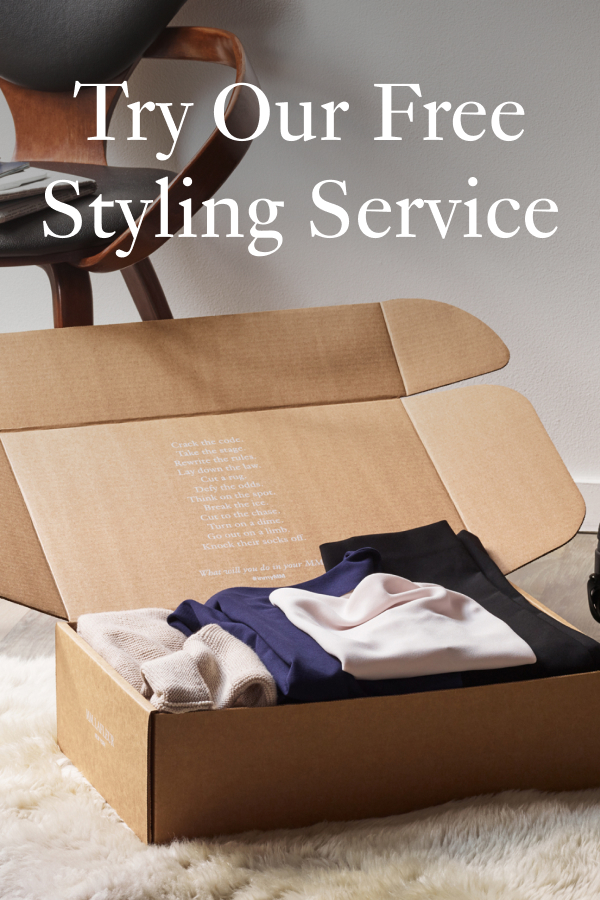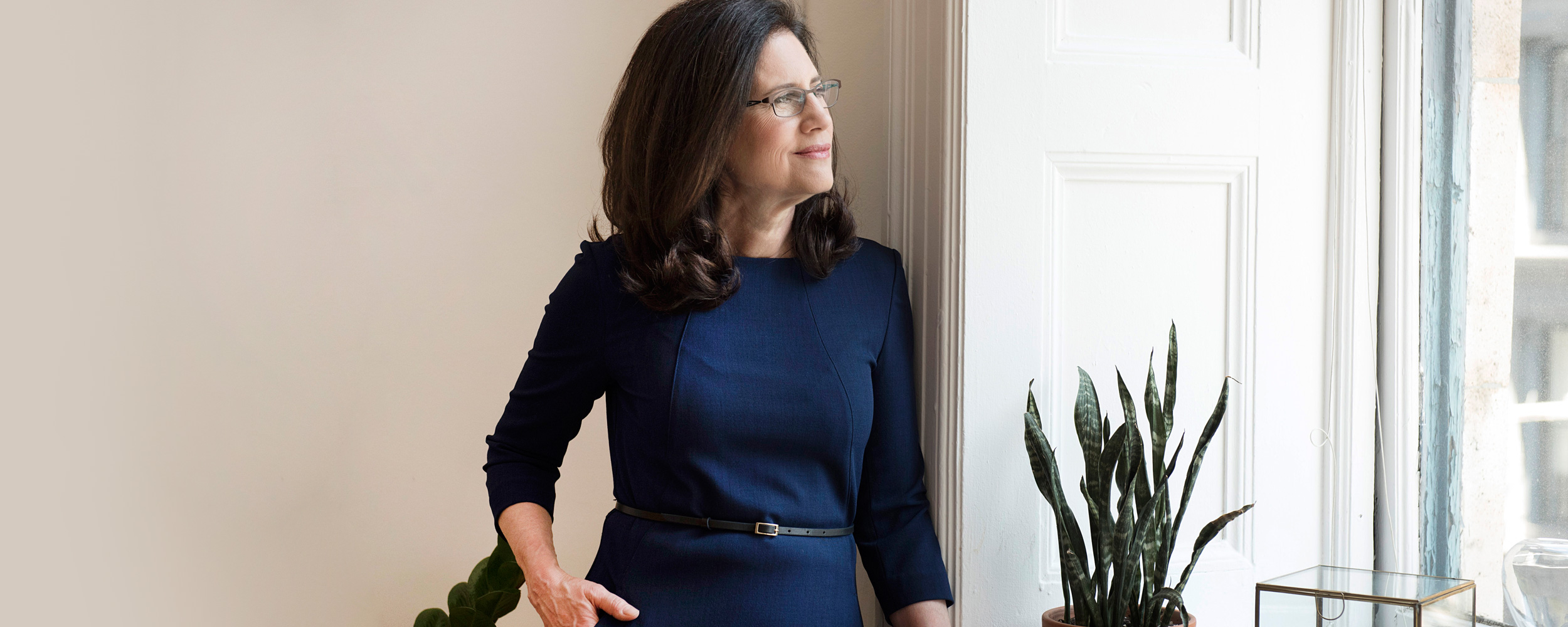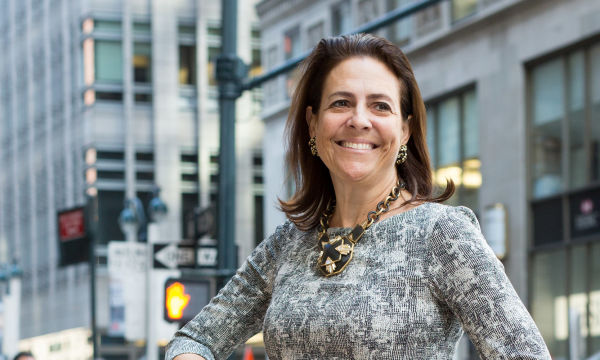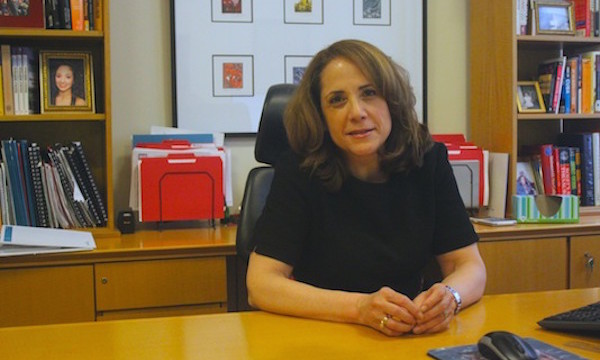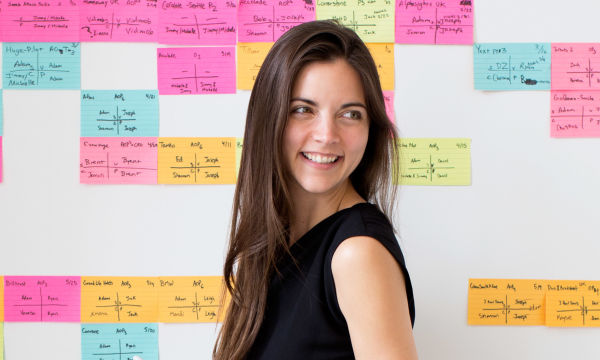The Advocate for 40-year-old Interns: iRelaunch CEO Carol Fishman Cohen
April 21, 2017 | Filed in: Woman of the Week
When Carol Fishman Cohen was 40, she began interviewing for jobs—after being out of the full-time workforce for 11 years to raise her four kids. Now she’s the CEO of iRelaunch, a company that helps professionals return to work after a hiatus (also known as “relaunchers”) and employers who might want to hire them. Her Ted Talk, “How to get back to work after a career break,” has been viewed more than 1.4 million times, and she is the co-author of Back on the Career Track: A Guide for Stay-at-Home Moms Who Want to Return to Work. She recently paid a visit to MM headquarters to talk return-to-work tips, the importance of an updated wardrobe, and why she feels like a 23-year-old entrepreneur.
BEFORE MY CAREER BREAK, in the late ’80s, I was working at an investment bank called Drexel Burnham Lambert. When I was on maternity leave with my first child in 1990, the company collapsed. So, even though I was planning to return, there was no company to return to. I had three more children in close succession, and wound up being out of the full-time workforce for 11 years.
DURING YEAR NINE of my career break, I accepted a two-year term as the president of the Parent Teacher Association at my children’s school. I remember thinking to myself, “When this two-year term is over, I’m going back to work.” That was in 1999. No one was talking about relaunching careers, and I didn’t know anyone who had done it. Women I knew felt that if they took a lengthy career break, especially for childcare reasons, they were not going back. I felt very isolated and without a plan.
I MADE SOME MISTAKES during my re-entry process, but I did do a few things right, and one of them was staying in touch with my former colleagues from Drexel. One of them would always have a Christmas party, and I went every year. On year ten, I told everyone, “I’m thinking about going back to work.” And everyone said, “That’s great. Let’s have lunch.” Being at that party with all of my old co-workers and hearing their enthusiasm about my interest in returning to work—that was an important moment. I found out later that it’s a consistent theme: When people contact their former colleagues and classmates from the past, those people often have a “frozen in time” view of them. Even if your sense of self has diminished during your career break, their sense of you has not. They remember you as you were, when they worked with you.
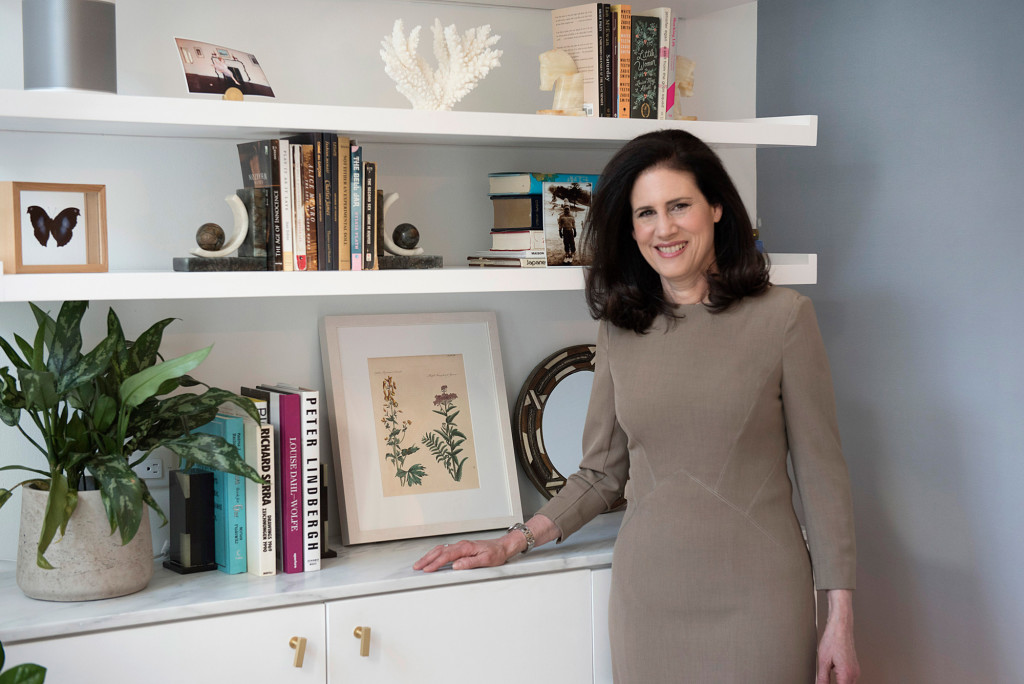
Carol wears the Angela dress in russet.
I WAS VERY DILIGENT about updating myself—not through any formal program, but by looking at all my old finance books, and all the financial transactions I had worked on during my investment banking days. I re-subscribed to the Wall Street Journal and read it cover-to-cover for a good six months to make sure I was up to date. Most importantly, I grilled my old colleagues on all the changes in the financial industry: the new acronyms and financial instruments. As I had more and more of these conversations, my confidence started to build. I got better at describing myself and my background and what I was interested in doing.
I ALWAYS RECOMMEND that people keep in touch with those who were junior to them, because while you’re on your career break, they’re moving up. I stayed in contact with a junior guy I had worked with, who then became a managing director at Bain Capital. He opened the door for me to interview there, and I got the job.
THERE WAS A BIG ADJUSTMENT at home when I returned to work. My kids were young—my youngest was going into kindergarten, and my oldest was 11. I had a very frank conversation with my husband about being what Anne-Marie Slaughter would now call “the lead parent,” especially in that first year when I was back. Everyone was supportive—the kids and my husband really encouraged me. They knew working would make me happier, and that would spill over into all my relationships.
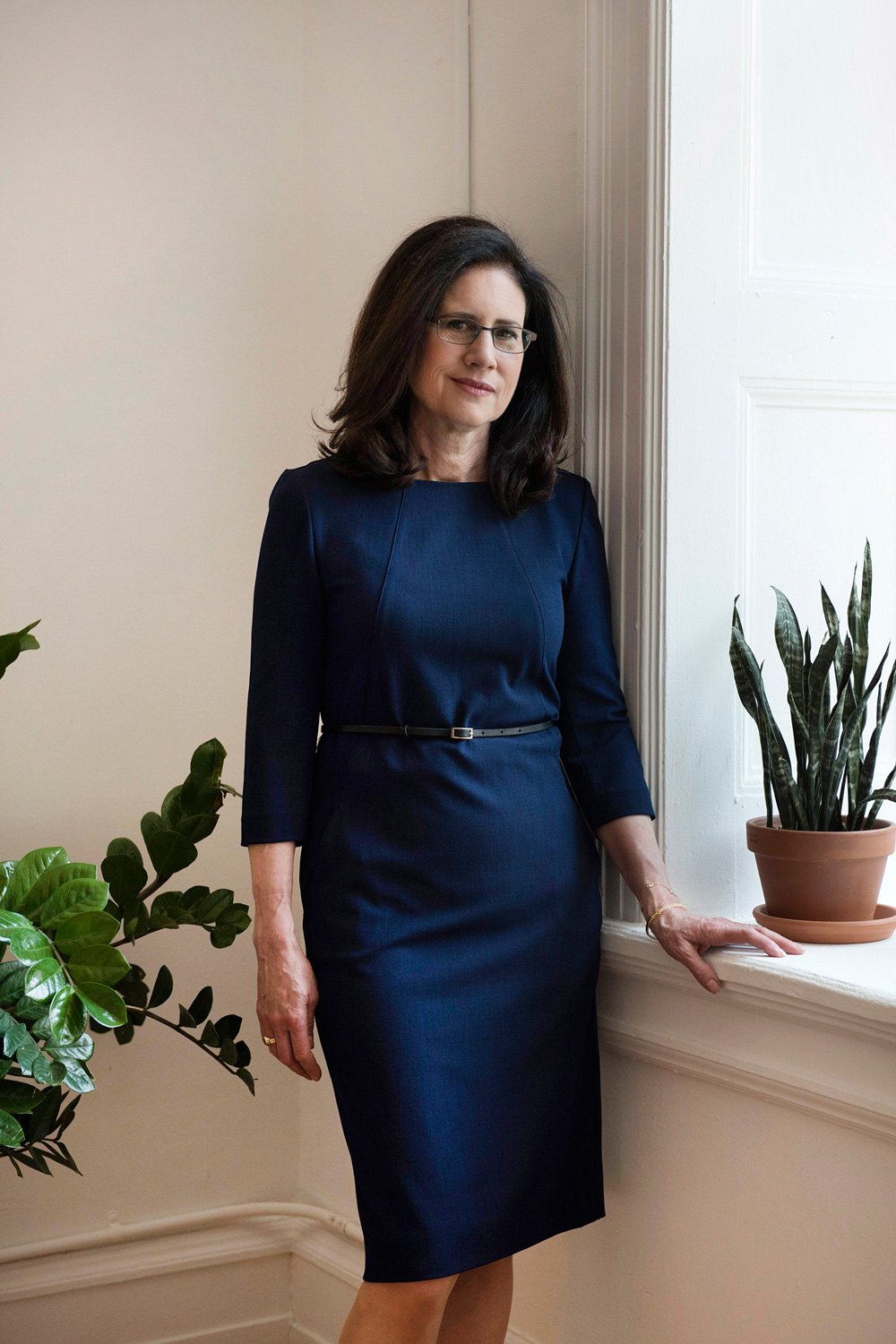
Carol wears the Etsuko dress in deep indigo.
AFTER I WENT BACK TO WORK, I met Vivian Steir Rabin, and she and I decided to co-author Back on the Career Track. The book is about the game plan we wished we’d had when we relaunched our careers. Vivian has five kids and took a seven-year career break, and went back to work in 2000. We researched the book from 2003 to 2005, and interviewed over 100 women who took career breaks of all different lengths. We also talked to academics and recruiters and employers and work-life experts to get the full range of responses and opinions on the topic.
WHEN THE BOOK CAME OUT in 2007, Vivian and I got a flurry of requests to help create career re-entry programs with companies and academic organizations, so we founded iRelaunch to respond in a more formal way. We started the iRelaunch Return to Work Conference, which has run 19 times since 2008. Over 5,000 people have attended to date. We’ve also done a tremendous amount of work with companies to help them create their own career re-entry programs, usually involving internships. The internship is a successful vehicle for employers to engage with returning professionals because it allows the employer to test the working relationship before making a permanent commitment. These internship programs have an incredibly high conversion rate to full-time employment—between 50 and 100 percent, depending on the company.
INITIALLY, WE WERE SOLELY FOCUSED on moms returning to work; since then, we’ve broadened our view to include men who have raised children, as well as men and women who have taken career breaks for reasons that have nothing to do with childcare. Our relaunchers are still 93 percent women, but we’ve diversified considerably.
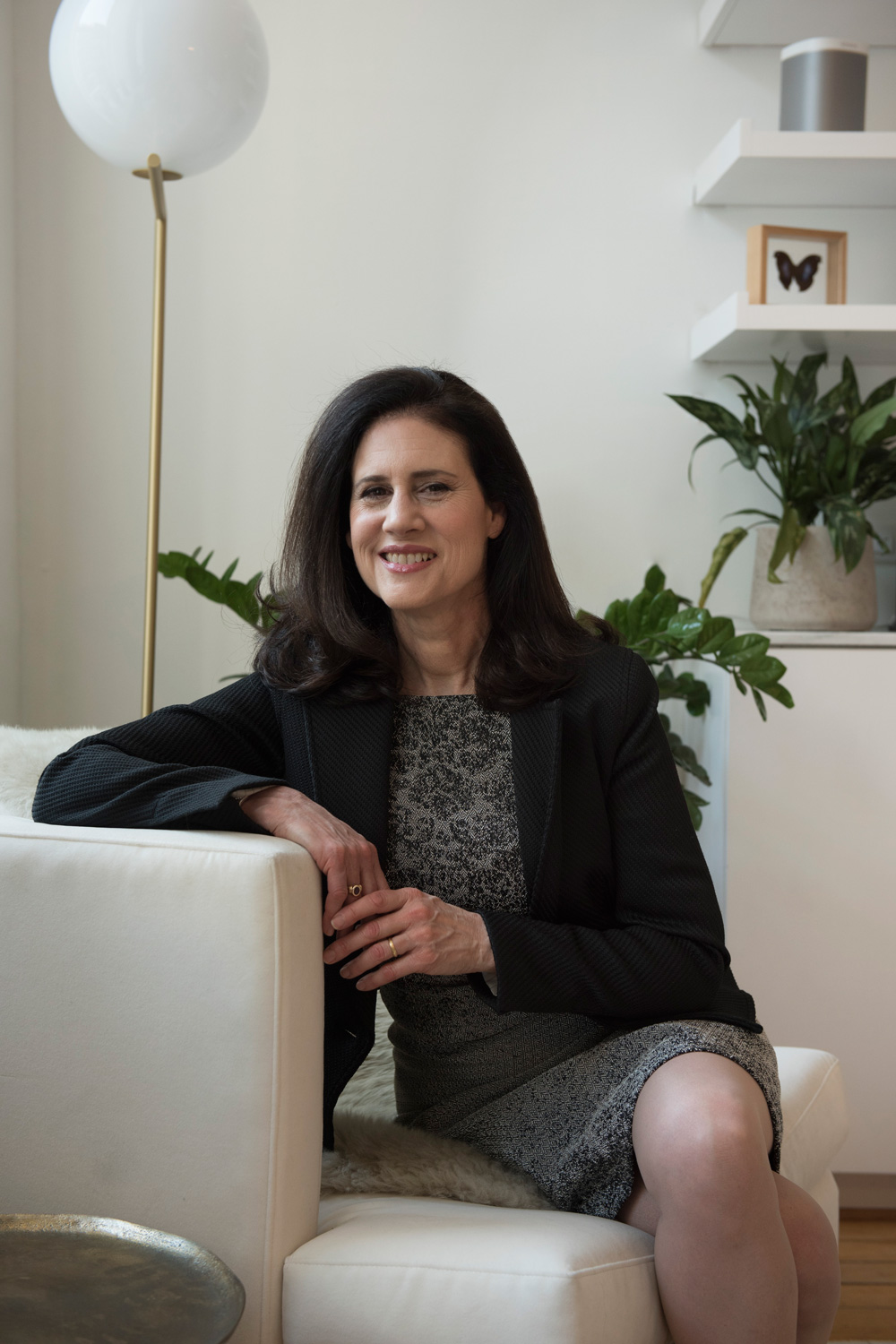
Carol wears the Lydia dress in dapple with the Albright jacket in onyx weave.
THE CONSISTENTLY HIGH CALIBER of the return-to-work pool is incredible. Earlier this month, I was at the IBM tech re-entry program, which we helped create; we always go around the room and introduce ourselves and talk about our backgrounds. It gets me every time, when the participants talk about their past work experience and backgrounds. I sit there and think, “How can employers not be engaged with this pool?” The quality is too high to ignore.
A NEW WARDROBE IS A BIG PART of going back to work. For me, it was thrilling to a) get new clothes and b) be back in that new professional attire, after years of being in jeans. It was exciting to think, “This is the new me, I’m entering a new chapter in my life, and I look different.” Also, you need to look up to date—it’s very important in terms of the image you’re projecting.
ONE OF THE BEST ATTRIBUTES of relaunchers is our enthusiasm about returning to work. Personally, I feel like I’m soaring. I’m 57 years old, and to be at this age and this point in my career—it’s so energizing and gratifying. I feel like I’m a 23-year-old entrepreneur. I think there’s a changing perception about age, and that’s in part because of the whole relaunch movement. Being an expert in your subject matter is an antidote to ageism. Focus on what you know, not how old you are.
Photos by Liz Clayman.


